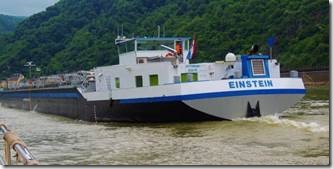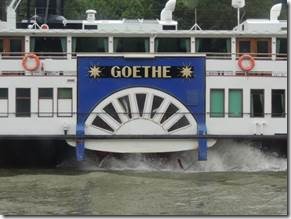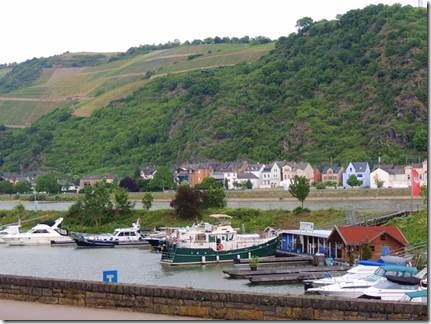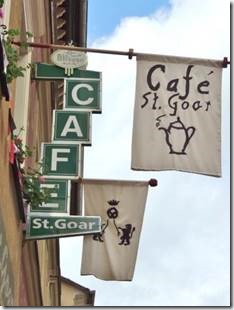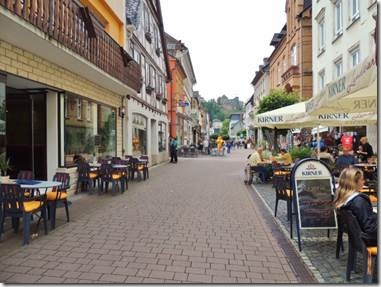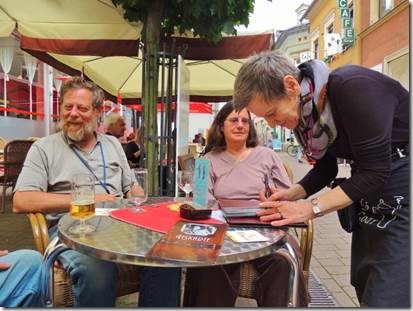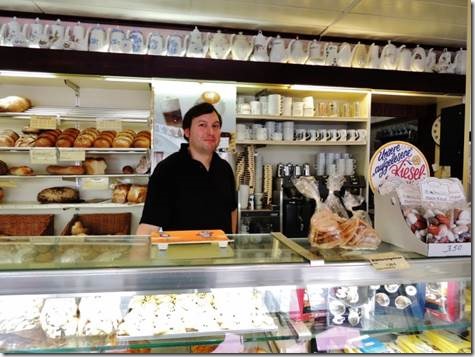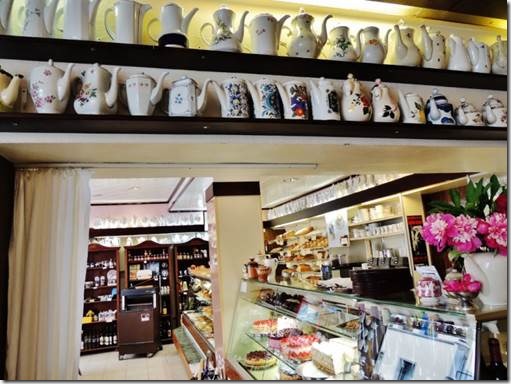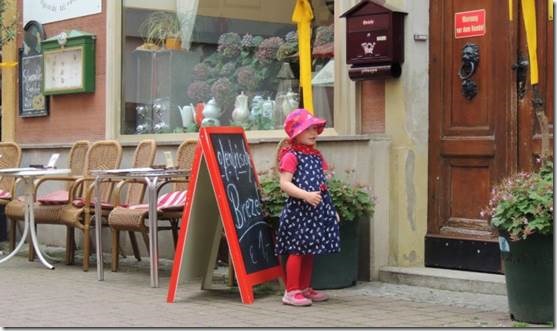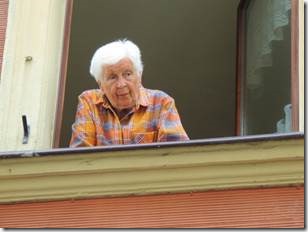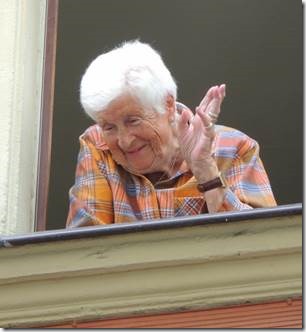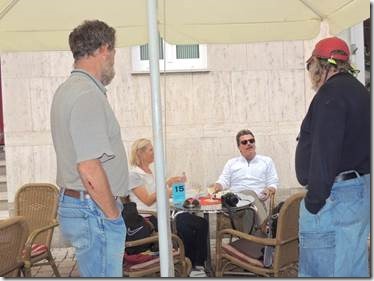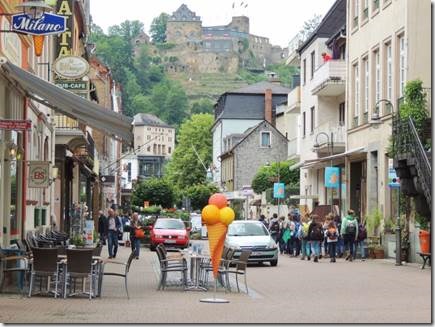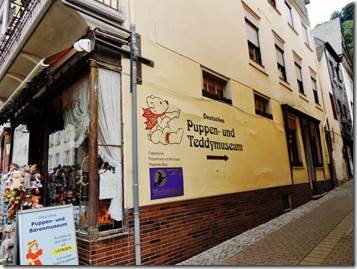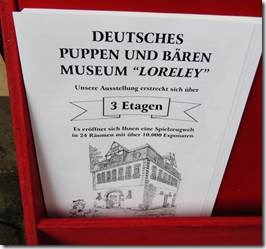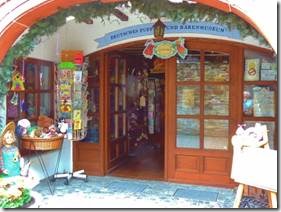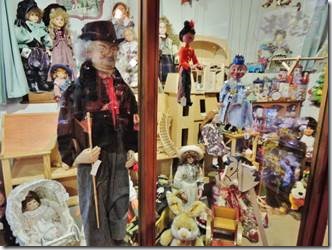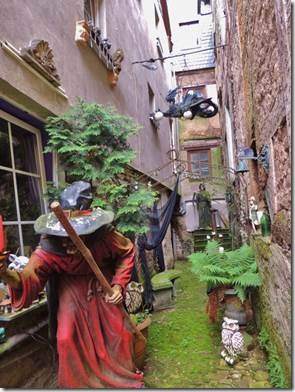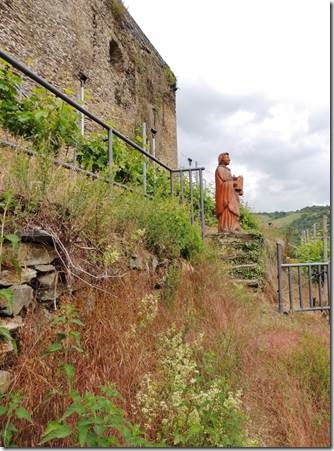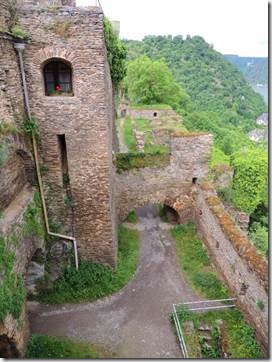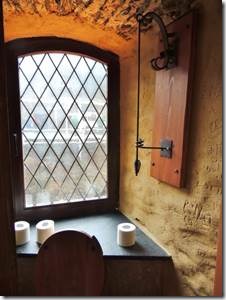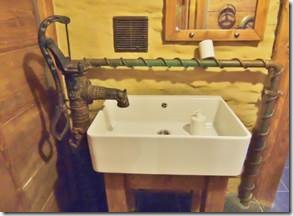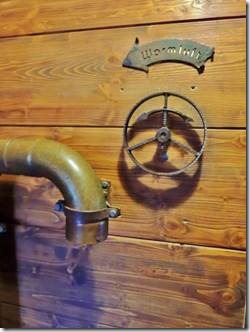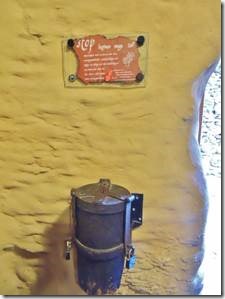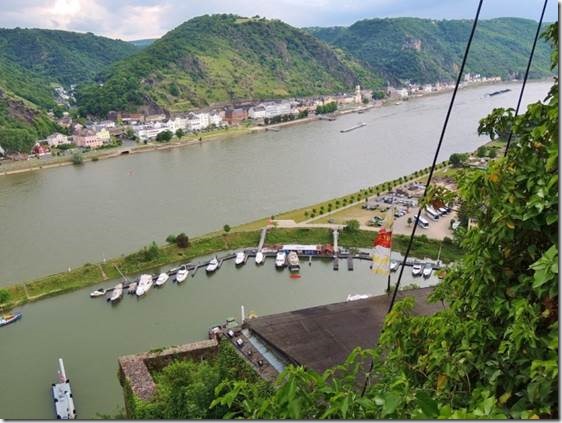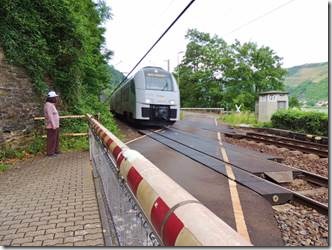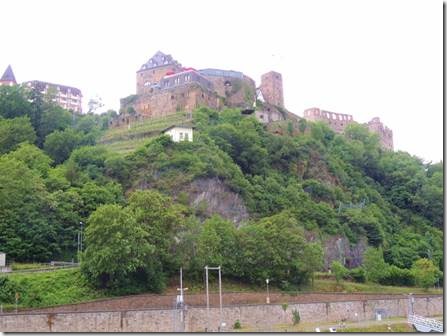Along the Main after two days in Frankfurt
Guten Morgen,
We spent the past two nights in Frankfurt. The first night Michael Kahn, one of Randal’s Odyssey 2000 World Bike Ride, friends came to visit. Michael is doing a solo 6 week bike ride through Germany stopping also to visit the town where his mom had been born. It was great fun listening to Michael and Randal reminisce. More about that in the Frankfurt emails to follow. But first our stops in the two charming towns of St Goar and next email Bingen.
Ru
St. Goar
|
Only one Einstein but I’ve seen several Goethe or the same Goethe several times during our travels. |
|
Beautiful terraced hillsides which is why the area is a UNESCO Heritage site |
|
We dwarf the marina building in St Goar. Many marinas (really small local yacht clubs with a few visitor berths) along the river have docks too small for us. So it takes good planning by Mary and Rick and some luck to find a spot for the night. So far, so good. We are early in the season before everything really gets busy. |
|
We arrived early enough to go find lunch in town. |
|
The Café Owner explained to me why coffee pots are shaped differently from tea pots. His collection fills all the walls but he has hundreds more at home. Visitors bring him coffee pots and I think then use that one when they come for coffee. And desserts! |
|
“The different shapes for tea pots and coffee pots result from the nature of tea and coffee. Tea leaves float and the spout, which joins the body of the tea pot near the bottom, allows the liquid brew to flow out from under them. Coffee grounds, on the other hand, sink, so the spout is typically mounted near the top of the coffee pot, allowing the coffee to flow out from above the grounds. Additionally, the more rounded shape of the tea pot encourages movement and floats the tea leaves while the taller coffee pot lessens the movement of the liquid and promotes the settling of the grounds.” |
|
Little girl outside the Café with her mom and grandparents I snuck this photo while she wasn’t looking but then she saw us and smiled! |
|
This couple was from California, and if I remember correctly, the second Americans we’ve met along the river. The first was the baker in the bar in Oberwinter who had moved to the US in the 60s and become a citizen. |
|
Main Street St Goar looking up at the Rheinfels Castle. |
|
We looked in at the Puppet Museum but really didn’t have to time it would have taken to justify the entrance fee. But hopefully somewhere along the way I’ll get to see a puppet show. |
|
This alley looks like Cape Cod on Halloween. But Germany is the country of the Brothers Grimm. And after seeing Wicked while in London, I’m partial to witches. |
|
A statue of St Goar just near the castle and some of the ruins. |
|
We didn’t visit the castle but we did visit the WC which was an adventure all in itself. Flush Wash Dry Pay toll |
|
Looking down on Doramac and one of our last stops on the Rhein. Waiting for the train to pass on our way back to DoraMac. Most places we overnight seem to have railroad tracks just behind our boat so we hear them, but not to keep me awake. The tracks follow the river most of the way as does a cycling/walking path. |
|
Looking back at the Rheinfels Castle from the back of DoraMac |
|
The history of Castle Rheinfels and the town of St. Goar As a guest at the Romantik Hotel Schloss Rheinfels you will also learn the fascinating appeal of Castle Rheinfels or ‘Burg Rheinfels’ as the locals call it. At one time it was the mightiest fortress on the Rhine and its size and construction are still very impressive today. Archaeological finds show that the current suburb of St. Goar was already inhabited in Roman times. Ships needed assistance to get over the reefs at the Lorelei. It is believed there was a ferry boat connecting the Roman roads. The small settlement takes its name from the holy Saint Goar, who founded a Christian hostel for the poor and travellers here in the year 550 AD. His grave became a well visited pilgrimage site, which was looked after by a community of clerics. In the 8th Century it became the possession of Prüm Abbey (Eifel). The first steward of the monastery was the Count of Arnstein and, from 1190, the Counts of Katzenelnbogen. This meant the city was under military protection and the Count’s jurisdiction. Built in 1245 by Diether V. von Katzenelnbogen, over the centuries Castle Rheinfels became the most important fortress on the Rhine. Visitors to Rheinfels are surprised by how extensive the ruins are and by the maze of military and underground mine passages that are still accessible today. Although Diether V. was a member of the ‘Rhine Confederation’, in 1255 he raised the St. Goar Rhine Toll. It was soon after that Castle Rheinfels had to pass its first major test: 26 towns, with an army of 8,000 infantry and 1,000 cavalry, supported by 50 vessels, besieged the castle for a year and 14 weeks, only to then give in and leave without taking it. After that the castle was considered invulnerable. In 1527 Philip I introduced the Reformation. In the 17th Century, and at great expense, his son Philip II rebuilt the castle as a Renaissance palace. Philip II was known for his brilliant and lavish court. Under Count Ernst von Hessen-Rheinfels the flourishing town of St. Goar once again became the cultural centre of the region. Ernst tried to reach an understanding between religions and delighted in exchanging ideas with the intellectual giants of his time. In 1794, during an attack by French revolutionary troops, the castle was surrendered without a fight and destroyed by the French. St. Goar remained under French administration until 1813. In 1815 it was passed to Prussia, once again received the status of an administrative centre and became the Borough’s main town. In June 2002 the cultural landscape of the Upper Middle Rhine Valley, bounded to the north and south by the cities of Koblenz, Bingen and Rudesheim, was added to the list of UNESCO World Heritage sites. Such sites are recognised as being of outstanding universal value and considered as part of the heritage of all humanity. That the Upper Middle Rhine Valley has been recognised as a World Heritage site reflects that this cultural landscape has evolved through the continuous intervention of man and nature for centuries. http://www.schloss-rheinfels.net/castle-hotel/the-history-of-the-castle-rheinfels/ |

